Like the same old “Consoles are going to destroy PC gaming, just you wait and see!” routine that’s still being regurgitated in countless clickbait headlines, so too does its inbred cousin, the “Single player games are dying out!” scaremonger, occasionally pop out its maniacal head to assure us all that the Single Player Apocalypse is nigh.
And while the gaming market certainly is a chaotic mess of constantly-shifting trends, abject greed, and inscrutable publisher decisions, on the whole – gaming, all of gaming, has never been more vital. Excellent computer games of all genres, shapes, and sizes are being released every day.
Regardless of what sort of games you like, the problem is no longer “There hasn’t been a good [insert genre] in ages, I have nothing to play!”, but rather “The only way I’ll get to play all of these excellent new [insert genre] is if I quit my job. And clone myself. Several times.”
Paradoxically, the more choices we have available, the harder it is to make a decision. In psychological terms, this is referred to as overchoice. This list of best single player PC games has been specifically chosen to help you with that. Each game on it is a phenomenal representation of its genre. But, even more important than that – they’re terrific video games that every gamer should try out.
First Things First
While multiplayer games can have a single player campaign, and single player games can often be played in multiplayer (including couch co-op) mode, what separates them from one another is their primary focus. The best multiplayer games will, of course, concentrate on delivering an unforgettable multiplayer experience, while single player ones will spotlight their SP side.
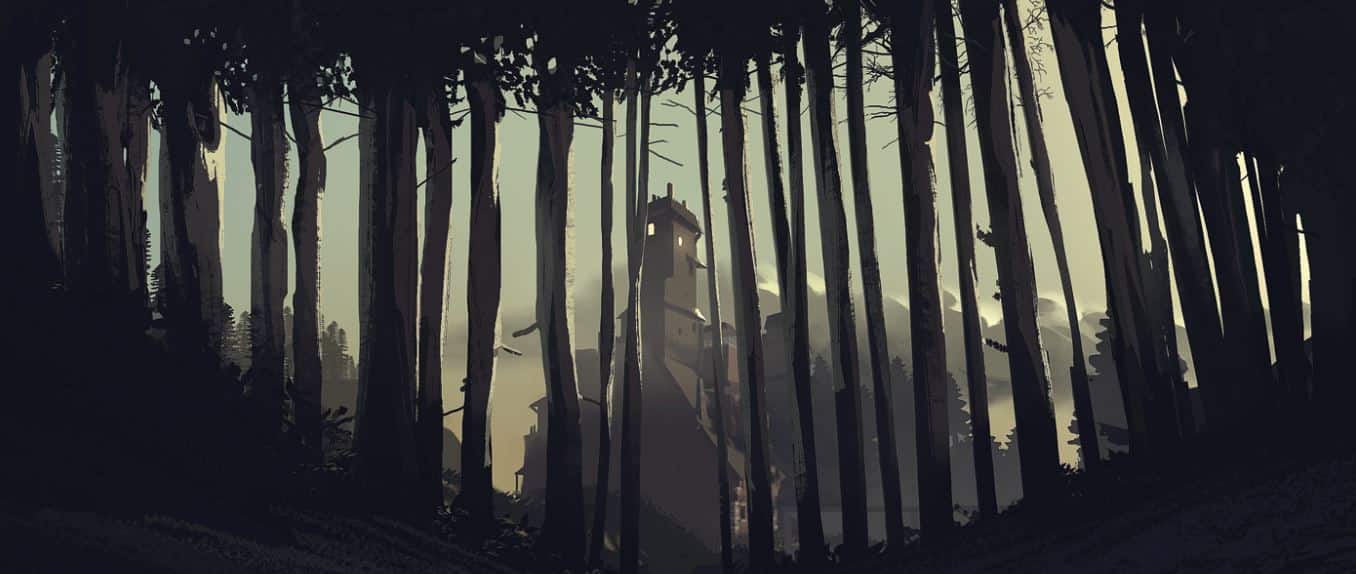
Some options and elements will only exist in one side of the game, while other games, by their very nature and design, simply can’t be played in multiplayer.
As mentioned above, there was a lot of unnecessary panicking – mostly by the gaming press – about SP games somehow becoming obsolete and not as popular (and profitable) as they once were. But, thanks to last year’s mega-hit God of War – one of the absolute best PS4 games, and a single player-only game – the usual doomsayers have been oddly quiet about the supposedly bleak future of single player.
Another difference between these two modes of play is that multiplayer is generally a communal experience – with all the good things (like the joy of cooperation), and the bad (such as getting yelled at by someone online in a language you don’t speak) this entails – while single player gravitates more towards personal and intimate gameplay and stories.
#1 Best Role-Playing Game: Planescape: Torment [Enhanced Edition] (2017)
Originally released in 1999 to modest commercial success, Planescape: Torment soon became one of the most influential and highly-rated computer role-playing games of all time. The brainchild of lauded game designer Chris Avellone, PS:T is at once a deconstruction of tired CRPG (and fantasy) cliches, and a love letter to everything they can be once you free your imagination from the chains of preconceived notions.
Gameplay
Chris knew he wanted to create a different kind of CRPG. He started by thinking about all the things that irritated him about them – the impersonal “Save the world” plots, the overabundance of swords and armors, the silly Dungeons & Dragons alignment system, how unuseful “brainy” stats like wisdom, intelligence, and charisma were in comparison to “brawny” strength, dexterity, and constitution, tedious Elves vs Dwarves – and decided to flip these conventions on their head.
If you’ve only ever played standard fare CRPGs, then PS:T can come off almost as a form of culture shock. The very beginning of the game perfectly encapsulates this – you start by waking up in a mortuary, surrounded by zombies. But instead of attacking to eat your brains, they’re slowly shuffling about, minding their own business.
Like the Baldur’s Gate and Icewind Dale series, PS:T is also an Infinity Engine game, and is similar to them in basic gameplay. But unlike these two games, instead of combat – which, admittedly, is still a large part of it – PS:T is more concerned about providing you with role-playing options. While you will still acquire items, gain levels, and become more powerful – that’s never what the game is really about – it’s all about the story.
Graphics
Like every other element in the game, the graphics of Planescape: Torment have an alien feel to them. While not unnerving or dark, they do an excellent job of conveying that PS:T takes place in an odd city that is populated by angels, demons, floating skulls, sentient buildings – and on several other planes all across the infinite expanse of the multiverse.
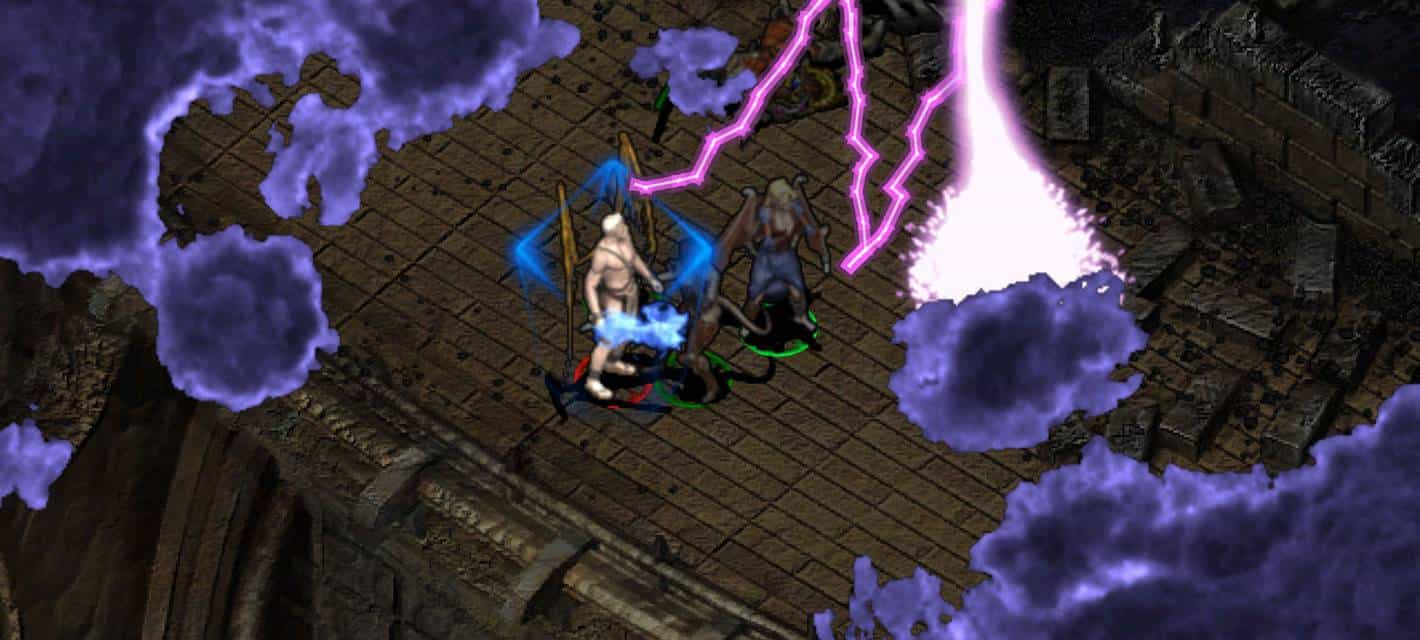
The visual aspect of the game is perfectly complemented by an outstanding tribal ambient soundtrack by composer Mark Morgan. The music is always poignant and a perfect fit for such a melancholy game.
Story
“What can change the nature of a man?” – this is the central theme of the game. More than any other game, PS:T is about identity and what defines our natures. Is it our memories, is it our actions? Can our nature ever really change, or are we doomed to repeat our mistakes for all eternity?
Planescape: Torment is like a philosophy class – tackling complex issues of morality, ethics, good, evil, responsibility, mortality, souls, in such a natural, organic way that never feels forced or pompous. Unlike many games that try to cover similar topics, it doesn’t try to preach at us, but lets us come to our own conclusions.
The Nameless One, our amnesiac, seemingly immortal protagonist, sets off on a quest of (literal) self-discovery. In order to find out who he was and figure out who he can be, he must retrace the steps of his former reincarnations in Sigil – the city at the very center of the multiverse.
Along the way, he collects a party of misfits and equally-troubled characters, and faces off against foes both real and metaphysical. It’s one of the rare stories – not just in gaming, but all of fiction – that manages to make every situation, every quest, conversation, item, spell, creature, and location, revolve around and reinforce its themes and narrative.
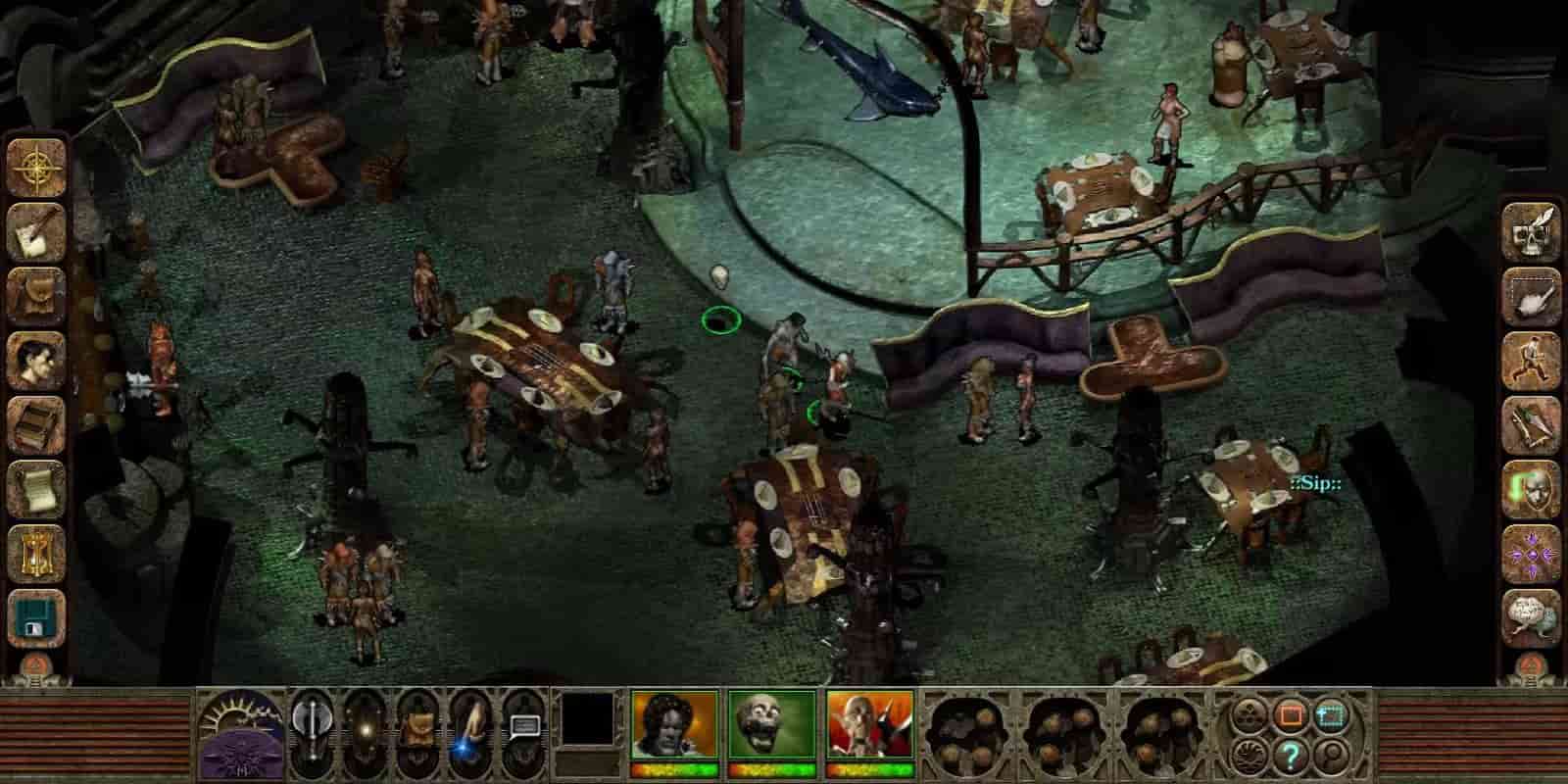
Overall Review/Final Thoughts
Planescape: Torment isn’t for everyone, but everyone should play it. It’s a game that is the singular expression of its lead designer and a piece of media that you can show to anyone who tries to convince you that games aren’t art or that they can’t be as deep or as well-written as a good novel.
The enhanced edition comes with minor upgrades such as widescreen support and a remastered soundtrack, but the biggest improvement is that Chris Avellone himself re-edited a lot of the writing in the game to make it better and more consistent.
Developer Beamdog did a much finer job with this enhanced edition than they did with their Baldur’s Gate 1-2 and Icewind Dale 1 ones, where they added a lot of superfluous elements and content that is inferior in quality and clashing in style to the one from the original games.
#2 Best Point & Click Adventure Game: Day of the Tentacle Remastered (2016)
Another remastered classic, this time from 1993 – an era when graphic adventure games were THE genre – Day of the Tentacle is considered by many to be the best point and click adventure game ever made. The goofball premise, zany characters, goofy puzzles, madcap art, and professional voice acting, DotT marks a high point in adventure game design that still hasn’t been surpassed more than two decades later.
Gameplay
Day of the Tentacle is a LucasArts adventure through and through. You control three characters that you can freely switch to and from: nerdy Bernard, metalhead roadie Hoagie, and borderline-insane medical student Laverne. Thanks to some good old time travel shenanigans, Hoagie is transported 200 years into the past (during the American Revolution), and Laverne 200 years into the future.
All three of them have to work together to get back to the present so they can defeat Bernard’s former friend – the Purple Tentacle, who mutated and went insane and hell-bent on world domination from drinking toxic sludge.
Yes, this is as wacky as it sounds – and it only gets funnier the more you play it. Puzzles have unorthodox, but still coherent solutions, that rely more on lateral thinking and Loony Tunes-style cartoon physics than they do on regular logic.
Graphics
Speaking of cartoons, the entire game looks like an animated feature from the 1950s – the characters are all drawn in that same esthetic, where proportions are malleable and the perspective of all the objects and backgrounds are asymmetrical and skewed on purpose.
The remastered graphics have been completely redone in the same style, only with smoother edges to account for the limited pixels that were available back then. Just like in other LucasArts remasters, you can shift between the old and new graphics on the fly.
Story
The full title of the game is Maniac Mansion II: Day of the Tentacle, but even though it’s a sequel, you really don’t need to have played the first game (which came out in 1987) to understand what’s going on.

The story is just an excuse to get the characters into absurd predicaments, but the characters and dialogues are what really make the game so fun. Every conversation is chock-full of hilarious jokes and characters, even historical ones, are always fun to interact with.
Overall Review/Final Thoughts
Like another time-traveling masterpiece – Back to the Future – Day of the Tentacle still holds up today. The gags are just as funny as they once were, the puzzles every bit as goofy. The remastered edition ensures that the game will run on every modern system, and the redone soundtrack and graphics facelift guarantee that the game will be played for many more years to come.
#3 Best Strategy Sim: King of Dragon Pass
King of Dragon Pass is a hard game to categorize – part CRPG, part Choose Your Own Adventure, part city builder, part strategy, all of these characteristics come together in King of Dragon Pass to morph into something entirely its own, and never before seen. As such, it is a game that is hard to describe, since it is intentionally designed to be, at first glance, opaque and hard to get into – but that is all part of its charm.
Gameplay
After fleeing their ancestral homeland, the Orlanthi – a fierce and proud barbarian people – settle the frontier lands of the titular Dragon Pass. You manage one of these refugee clans. After the prologue, in which you designate the clan’s history, what gods they worship the most, their disposition to dragons, whether they are slave owners or a free society, if they are peaceful, aggressive, or balanced, and so on – you start the game.
Your job is to guide the clan through times both tranquil and tumultuous. To do this, you make the decisions on what the clan should do – when they should plant, harvest, hunt, train, trade with and raid on their neighbors.
This is done through the clan ring – seven representatives that lead the clan. Different members excel at different roles – so a devout follower of the god of knowledge, law, and writing, Lhankor Mhy, will typically make for an excellent diplomat.
There are hundreds of random world events that can befall you – some are positive, some are negative, but all of them have different outcomes. Your clan ring will give you advice (which can often be spectacularly wrong) on how to tackle these issues, which can take the form of something as innocuous as a traveling trader, to a full-blown demonic incursion.
Graphics
The artwork is made up of static screens, with no animation in the game. The images are in the form of warm and expressive watercolor paintings, that, like any good art should, instill a lot of emotion and meaning in a limited space. Even when outlandish things like anthropomorphized ducks, or chaos-spawned nightmares are shown, the artists make them all seem believable and consistent in style and look.
The game takes place in a series of menus, all of which are designed really well – the information on them is always presented clearly, and there are no hard to find or hidden options that would make this game even more confusing.

Story
King of Dragon Pass has a story that slowly reveals itself as you play it. The ultimate goal is to, of course, become the King of Dragon Pass. To do this, you have to take your time and, over several generations, guide your clan – first to a tribe and then to a kingdom.
The most important part of this process is the Heroquests – a somewhat psychedelic sequence where a member of your clan has to enter the realm of the gods and reenact one of their myths. These quests are some of the hardest things to pull off in the entire game – you have to understand the myth you are trying to recreate, as well have an experienced character who will undertake the trial. Even if you fulfill all of these prerequisites, you can still easily fail.
Overall Review/Final Thoughts
KoDP is as much of an experience as it is a game. In large part incomprehensible at first, you organically learn about Glorantha (the setting of the game), the strange rules that govern this world, legends that shape it, and creatures that populate it – by playing the game.
Then, after several hours in, a strange thing occurs – you start to understand it. Like a great role-playing game, you get into the character of a Bronze Age barbarian and start to think like them – unburdened by the constraints of modern Western morality we take for granted. It is a rare piece of gaming media that can have this profound of an effect on a player.
#4 Best Open World Fantasy Game: The Witcher 3: Wild Hunt [Game of the Year Edition] (2015)
What can possibly be said about the Witcher 3 that hasn’t already been uttered a million times before? After two very solid Witcher games, Polish developer CD Projekt Red blew everyone away with their third installment, providing a true testament to what a AAA open world CRPG can be like. Mostly praised for its gripping story and authentic characters, The Witcher 3 provides a rich and satisfying experience in every gameplay category.
Gameplay
Once again, you take up the role of Geralt, famed Witcher – a professional monster hunter for hire. No longer fully human, Witchers are outcasts from society and only barely tolerated because they know the secrets of monster-slaying better than anyone else.
Even though their mutations gift them enhanced speed, strength, and healing abilities, this only gives them a slight edge when battling monstrosities such as vampires. So, a proficient Witcher employs other methods – such as traps, potions, oils, and minor magical spells (called Signs) – instead of battling their foes head-on.
The third installment gives the player a much bigger area to play in, as well as an expanded assortment of activities, including the card game Gwent, which was so popular it even got released as a separate (and expanded) game.
Graphics
Being a game that’s over four years old, The Witcher 3 may not look as impressive as it did back when it was first released, but that doesn’t mean it still can’t take your breath away. Expansive vistas, especially in the DLC expansion, Blood and Wine, which takes place in a region of the world inspired by medieval France and is full of lush vegetation and vineyards, hold up even when compared to recent games.
But the best part of its visual presentation are the characters and cutscenes. Their faces are so expressive and life-like, that every emotion, no matter how subtle, is plainly visible. Amazingly, this applies even to monsters.
As for cutscenes, their cinematography is the on level of a major Hollywood movie – the camera angles, shots, and movements are more akin to a CGI movie than a video game. Regardless of TW3’s age, to get the most out of it, you’ll still need a great gaming PC.
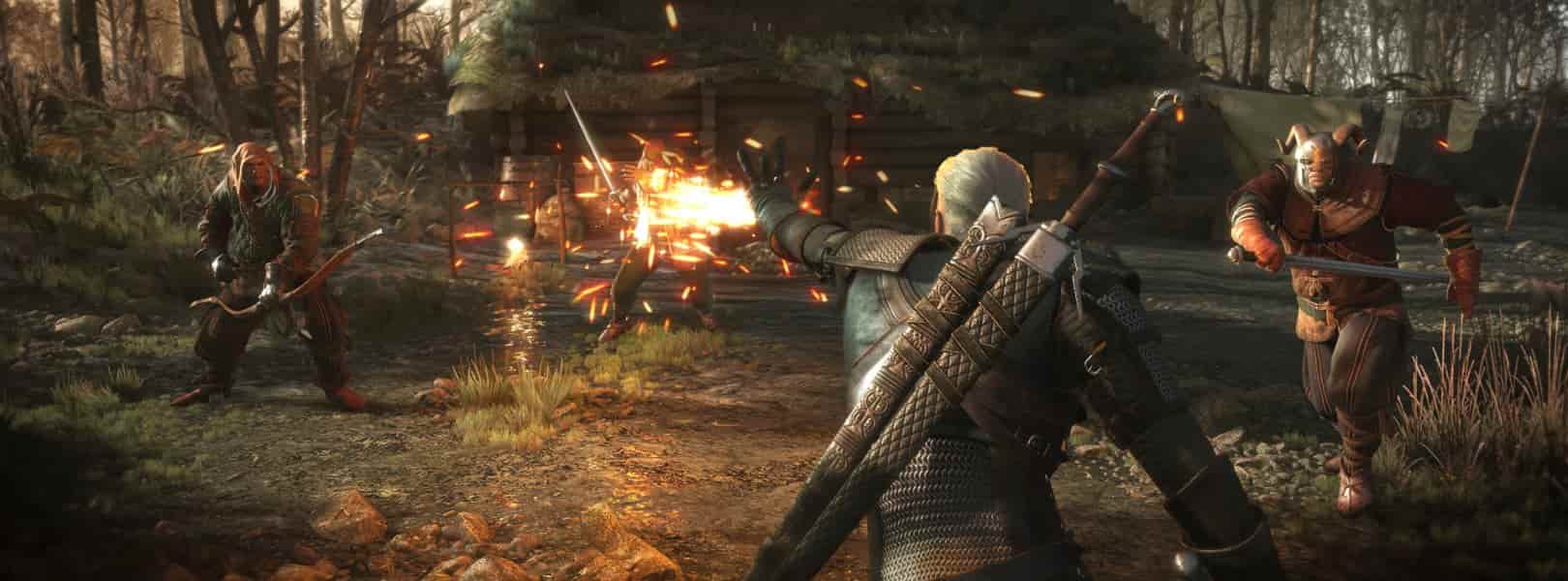
Story
Following the events of The Witcher 2: Assassins of Kings, Geralt is once again on the road, this time trying to locate his former lover, Yennefer. The search soon shifts to them joining forces to find their adopted daughter Ciri, who is the central figure of an ancient prophecy and destined to destroy the world.
The quality of the writing is apparent not just in the quest design – and, make no mistake, The Witcher 3 has some of the best-designed quests in gaming – but in the characters, even minor ones, as well. Every conversation is brimming with personality, and the character relationships, especially the genuine father-daughter relationship between Geralt and Ciri, are portrayed with a timeless quality.
Overall Review/Final Thoughts
The Witcher 3 isn’t a perfect game – it’s marred by poor loot and uninspired character progression systems, and is too reliant on non-sensical level scaling to artificially pad out an already huge game. But these are relatively minor issues (and they can be modded out if they really bother you) when compared to the sheer ambition and scope of The Witcher 3: Wild Hunt.
#5 Best Walking Sim: What Remains of Edith Finch (2017)
Walking sims have gotten a bad rap. Comparatively easy to make and with few gameplay elements, for a brief period of time it seemed like they were the default go-to game of choice for every aspiring indie hipster out there. Luckily, high-quality indie games like Firewatch and What Remains of Edith Finch prove that a great game can be made in any genre.
Gameplay
At its core, WRoEF is still a walking sim, so that means that you’ll be spending the majority of your gameplay, yup, you guessed it – walking. And climbing, swimming, flying, jumping, slithering, and all manner of other types of movement as well.
Apart from moving, there is very little interactivity (but still more than your average walking sim), and it mostly amounts to pre-scripted actions such as opening doors, turning pages in a book, and picking up items to examine. But what sets WRoEF apart from other walking sims are its imaginative story and locations you’ll get to visit (or imagine, depending on your interpretation).
Graphics
The graphics, while not particularly flashy, do a good job of drawing us in. At first, there are only a couple of hints that there is something off about the house where we’ll be spending the majority of the game exploring. Similarly to the Overlook Hotel from Stanley Kubrick’s “The Shining” movie, the layout of the house soon starts unraveling and makes less and less sense architecturally (and spacially) as we go along.
Soon we’ll get to see the world from the perspective of a tree-climbing cat, a rubber toy, through the lens of a camera – nothing is beyond limits in the world of WRoEF.
Story
In an effort to make peace with her past and unravel the mystery of her family’s bizarre misfortune (some would say – curse), Edith Finch returns to her childhood home, now long since abandoned. She traces her family tree, with every member coming to a gruesome and untimely end.
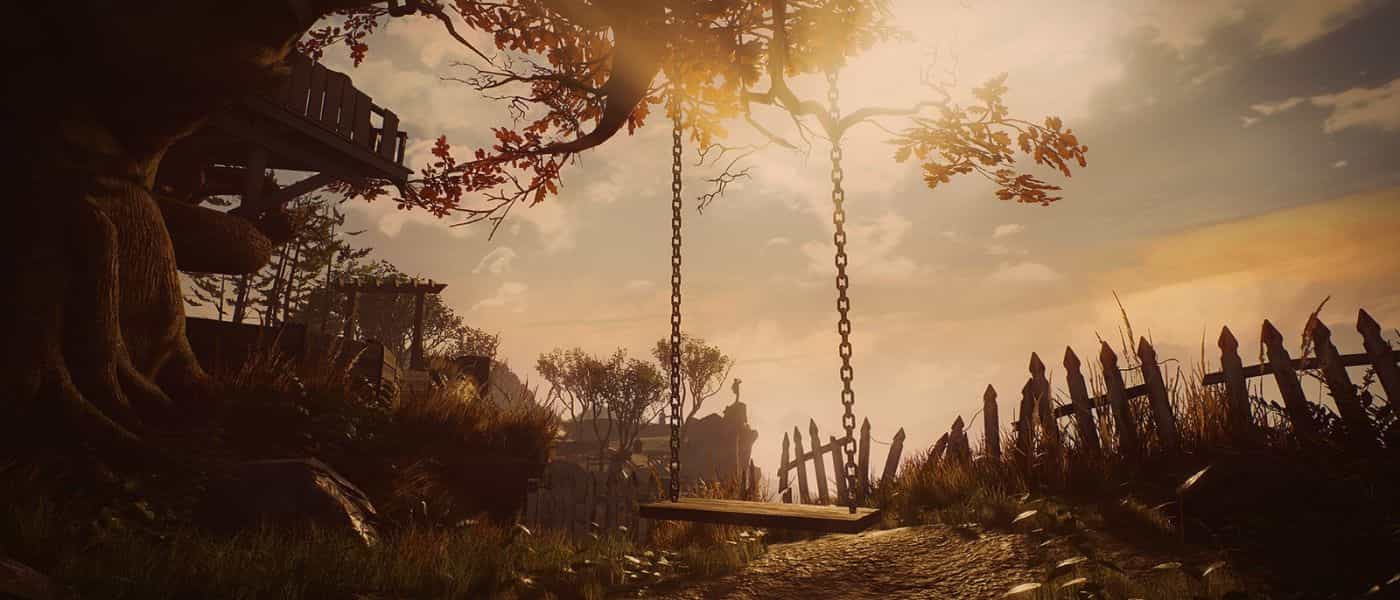
An excellent example of magical realism, this could be because of something sinister, or simply a case of bad luck. As she reads from their diaries, paper clippings, and notes, she is drawn into a flashback of the final moments of that family member’s life. Some of these tales are macabre, others are darkly humorous, or tragic, but each one is done in a separate style, forming an anthology of events.
Every death has a realistic (and quite probable) cause, but it is up to the player to decide what they will believe in.
Overall Review/Final Thoughts
What Remains of Edith Finch is a touching little game of surprising insight. It won’t take you more than two hours to beat it, but it’s a compact and expertly designed experience that will make you sympathize with and care for characters that you only spend a couple of minutes playing as, and whose fates you, sadly, already know.
#6 Best Horror Game: Alien: Isolation (2014)
The Alien franchise is 40 years old. During that time, it went from SF horror to action movie (in its 1986 sequel “Aliens”), to crossover mess of Aliens vs Predator, to its current prequel/soft reboot in Aliens: Covenant. But none of these have been as influential (or as good) as the one that started it all – 1979’s “Alien”.
There has been no shortage of Alien-based video games, but these usually take the “Aliens” approach and feature a burly Marine who’s blasting away at hordes of rampaging Xenomorphs. This is why Alien: Isolation is such a breath of fresh air – it’s inspired by the first movie, and the horror and human fragility when faced with a bloodthirsty apex predator.
Gameplay
Alien: Isolation is a survival horror game. These games are traditionally defined by a lack of supplies (including ammo), so avoiding direct combat is usually your best bet. You will encounter human and android enemies, which you can defeat, but the Alien cannot be harmed by your limited arsenal, so you will have to hide and hope it doesn’t spot you.
The Alien is always on the prowl, and can spot you by sight or loud noises. Apart from weapons, you are equipped with a flashlight and motion detector which can help you locate the Alien and other enemies, but using both of these comes with a risk – the Alien can spot your flashlight’s beam of light, and hear the sound of your motion detector. To survive, you will have to be smart, stealthy, and crafty (literally – by crafting items).
Graphics
Looking at it from today’s perspective, many Science Fiction movies of the past can look dated (or outright silly). The future as envisioned by “Alien” seemed like a possible outcome way back in the 1970s, but technology invariably marches on and even the best scientists (let alone filmmakers) won’t be able to predict how the world will look 20 years from now.
It’s commendable that Alien: Isolation didn’t insist on modernizing its outdated esthetics, but doubled down on the lo-fi look of the original.
Story
Taking place 15 years after the events from “Alien”, Ellen Ripley’s daughter, Amanda, learns that the flight recorder of her mother’s ship, the Nostromo, is located on Sevastopol, a remote space station. She makes her way to it, only to find that something strange is going on there. What follows is a standard Alienesque tale of corporate greed and double-crosses.

Overall Review/Final Thoughts
It’s becoming rarer and rarer to see a game that adapts its source material with such obvious love and reverence. If you’ve ever wanted to feel the helpless dread the passengers of the Nostromo must have felt when facing the slimy, bared fangs of the Xenomorph – then Alien: Isolation is a dream (or nightmare) come true.
The DLCs are also worth checking out, so it’s recommended you get the entire package – Alien: Isolation Collection, which includes all of them bundled.
#7 Best One Person Indie Game: Undertale (2015)
Another game that defies genre classifications, Undertale has long since been the darling of the indie gaming world. Made almost single-handedly by Toby Fox, it is a game that exemplifies the bravery and willingness to experiment and go against the norm that is such a driving force behind the indie scene.
Take a part of offbeat (J)RPGs like EarthBound, mix in a dash of bullet hell shooter dynamics, and sprinkle it all with meta-commentary on gaming as a whole – and you’re only beginning to scratch the surface of what Undertale really is.
Gameplay
If going into Undertale without any prior knowledge of it, initially it may appear as just another mass-produced, cheap RPG-Maker that used to saturate the gaming market. But this is dispelled in the first couple of minutes of play when an innocent-looking flower (named Flowey) transforms into a grotesque monster and tries to murder the player character – a little child.
Undertale is unlike anything before (or since). You go through a subterranean world that is populated by monsters (both friendly and not), and you can choose how to interact with them – whether you want to defeat them or show them mercy. This mechanic drastically changes the rest of the game (and even subsequent playthroughs), as your choices have consequences on the entire game.
Graphics
At first deceptively cutesy and retro, there’s always something that’s just a little bit off in the way Undertale looks – like it’s all a facade whose cracks will start showing if you stare at it long enough. Like everything else about it – it, too, was a deliberate design choice, made to misdirect the player’s expectations.
Story
To spoil Undertale’s story would be to do a great disservice to what the game represents. Suffice to say that a lot of care and affection went into crafting its characters and narrative and that you will need to play through the entire game at least three times to see (and understand) everything about it.
But, like fellow meta-deconstructionist game Nier: Automata, these new playthroughs are different – and interesting – enough to warrant playing it time and again.

Overall Review/Final Thoughts
When it first came out in 2015, Undertale was so hyped by just about everyone that it resulted in an unfortunate backlash – many people thought (and some still do) that it’s simply another pretentious, artsy indie game.
But to outright dismiss it is to overlook what Undertale has to say – about love, loss, family, friendship, violence and how gaming often disregards takes these things in its pursuit of mindless fun. To judge Undertale solely on the basis of its visual identity is to miss the forest for the trees.
Final Words
While there are definitely more well-known games out there, these best single-player PC games embody the essence of what makes SP gaming great – a deep, personal connection to the game world and the characters that inhabit it, a story that sticks with you long after you have finished the game, and satisfying, fun gameplay. No matter what the future of gaming has in store for us – in one way or another – single-player games are here to stay.